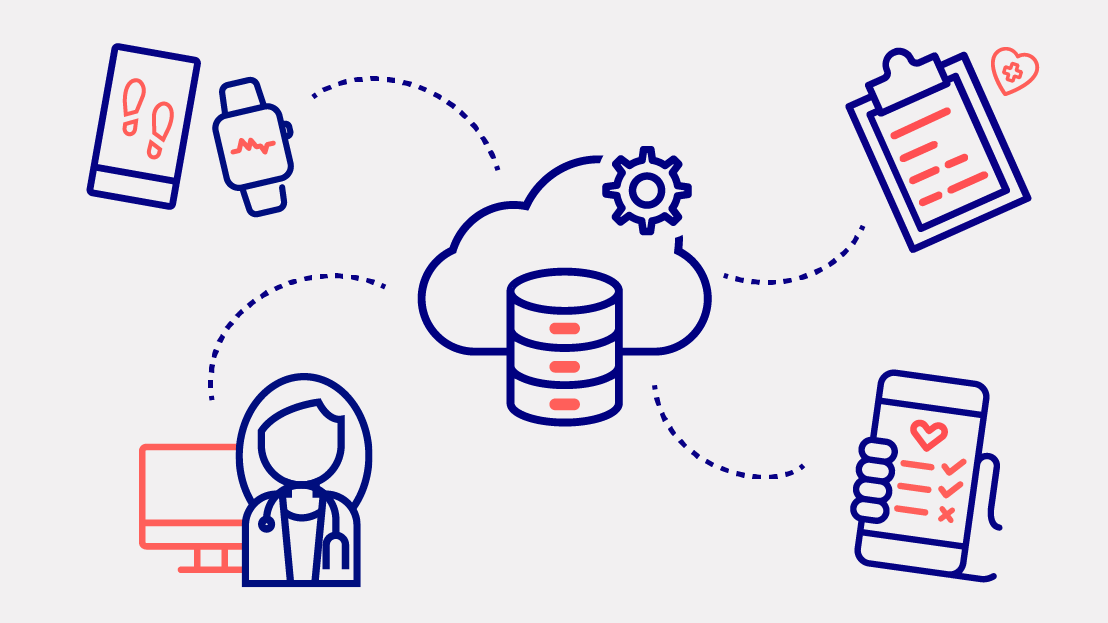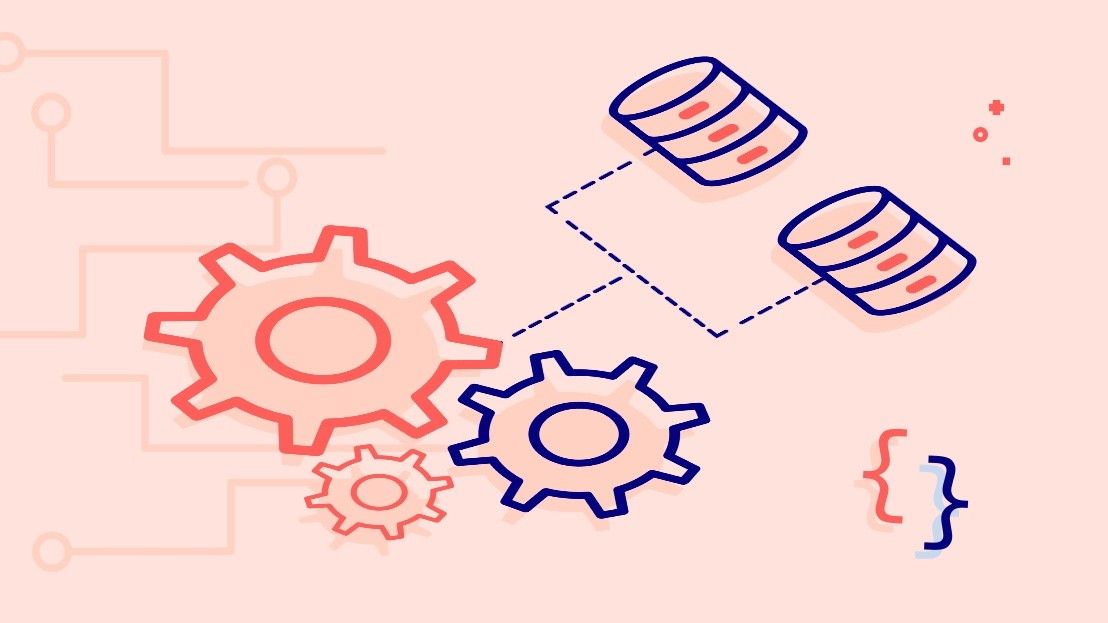
Interoperability in healthcare
Interoperability in healthcare
Each day, important data is generated in doctor's offices, hospitals, and laboratories, that can help practitioners make the right decisions for their patients. For the data to be useful, it must be accessible and human-readable. The information must be stored, must be retrievable, and must be displayable for the user.
However, even in the digital age, medical data isn't always processed this way, meaning its potential is wasted. Improving the way medical software systems work together, that is, improving their interoperability, is one remedy for this.
Helping patients quickly is a priority in everyday hospital life, but time is short. Hospital workers are required to make important decisions with little time to think. Whenever you visit a new doctor’s office, standard information is stored on their system about your allergies and medical history. Yet when it matters, this information is often unavailable.
The lack of system interoperability is a major reason for this, as valuable patient data is left stranded on an inaccessible system. Below, we’ve outlined what effect this has on doctors and patients, and what is required to change the situation.
Optimal treatments need collaborative systems
Every medical treatment requires some form of documentation and data processing, and there are an increasing number of medical devices and software programmes helping doctors achieve this. However, individual hospital departments and facilities often use tailored systems that aren’t compatible with other systems.
For doctors, this means they must enter the same data numerous times, wasting time that could be spent helping patients. For patients, it could mean repeatedly undergoing the same examination. This process not only stands in the way of optimal therapy, but also costs time and money.
What does interoperability look like in practice?
There are already good examples of system interoperability in the healthcare industry – just look at telemedical care. Telemedicine allows patients to receive medical care, regardless of their location, using phones, computers, and other devices.
It’s a prerequisite for telemedicine that relevant patient data is available digitally and can be sent to others. A family doctor, for example, could share a patient’s medical history with a specialist to determine the best course of treatment. This has many benefits for practitioners, particularly in rural areas, where there are usually fewer general or specialist physicians. Patients in these regions not only have to travel further, but must also wait longer, for appointments.
Creating an infrastructure for telemedicine
For healthcare providers to interact with one another, share health data for research purposes, and provide patients with telemedical care, they need an infrastructure that supports the exchange of information. In other words: Their various software services must speak a common language.
Usually, multiple people are responsible for deciding which language is used for targeted communication among systems. The details depend on the needs and constraints of different groups, such as users, health insurance companies, and software manufacturers.
Aligning these disparate parties takes time and several factors must be considered. For example, not everything that is technically feasible is also medically valuable or ethically justifiable. Organizations that work with healthcare standards, like HL7, bring all these concerns together.
All the involved groups must find a common ground before the infrastructure for information exchange can be built. Medical software is often highly complex and requires extensive user training, so all changes must be carefully introduced to ensure patient safety.
The four levels of interoperability
Interoperability not only has to support various interests, it also has to support various levels of complexity. Software must be able to exchange sensitive data. Technical interfaces must be able to understand and process data. Further, there must be a legal and organisational framework for the collaboration of different systems.
These aspects are divided into four successive levels of interoperability:
- Structural interoperability
- Syntactic interoperability
- Semantic interoperability
- Organizational interoperability
What is structural interoperability?
Structural interoperability focuses on establishing connections between systems that facilitate the secure exchange of health data. It ensures data is only transferred between authorized partners.
An example of such a structure in Germany is the Telematics Infrastructure (TI) from gematik GmbH. With the TI, the Berlin-based organization’s goal is to ensure the digital transformation of the German healthcare system. Additionally, gematik's work includes the definitions of legally binding standards and specifications for all components and services used in the TI. "This guarantees their functionality, compatibility and security, and ensures they can be used by all players in the healthcare system," writes the company on the gematik website (in German language).
What is syntactic interoperability?
If a family doctor wants to access telemedical advice from colleagues using a secure infrastructure, their office software must be able to transmit certain data. Syntactic interoperability ensures a common technical language between the software systems involved.
One of example of such a common data language is the standard known as Fast Healthcare Interoperability Resources (FHIR), developed by the international organization HL7. This standard creates a common technical language for systems. It defines how health data – such as X-rays, doctor's letters, or diagnoses – must be recorded so various software services can understand it.
Carefully structuring the information into clearly identified parts in this way is critical to the accurate transfer of data. Despite significant recent progress, computers cannot yet reliably interpret long text passages written by humans.
What is semantic interoperability?
Regardless of the illness at hand, a common understanding of available information is of key importance to the healthcare system. For example, if a patient has a sore throat, how they are treated depends on whether the problem is caused by a virus or by bacteria. If the patient is referred to an ear, nose, and throat clinic, the doctors there need to precisely understand the information collected by the referring doctor to decide which treatment to use. Therefore, a shared set of terms to exactly describe illnesses, symptoms, et cetera, are vital to the correct treatment.
The International Statistical Classification of Diseases and Related Health Problems (ICD) and the Systematized Nomenclature of Medicine - Clinical Terms (SNOMED CT), are two examples of medical terminology sets shared across many countries. This common understanding of concepts is called semantic interoperability. It is also the basis for furthering the automatic processing of data, like in machine learning.
Organizational interoperability
At the organizational level, interoperability is primarily about finding cross-system processes and clarifying permissions. This can mean, for example, clarifying the extent to which doctors are safe-guarded when treating a patient together. In this context, it is also important to clarify how doctors who support colleagues through telemedicine are paid for their time.
Charité study suggests telemedicine can save lives
Within the Internet of Things (IoT), not only is the networking of software important, but also the technical interoperability of networked devices. The Fontane study (in German language) by the Charité university hospital in Berlin showed how advantageous it can be when devices record patient data and transfer it to a cooperating network.
Prof. Dr. Friedrich Köhler, the Director of Studies, and his team demonstrated that telemedicine can save the lives of cardiac patients using networked devices. The German Federal Ministry of Education and Research backed the study, providing 10.2 million euros in funding from 2009 to 2018. More than 1500 patients with chronic heart failure participated in the study for one year and more than half of the participants were looked after by the Charité team.
The participants received four easy-to-use devices such as a simple electrocardiograph, a blood pressure monitor, a scale, and a tablet computer for self-assessment. Their data was recorded and automatically transferred to a team at the university clinic to be evaluated. Depending on what the data said, the participants were then advised to take certain actions, like change their medication or visit their doctor.
The study’s results favored the use of telemedicine: Patients who received telemedical care not only spent significantly fewer unplanned days in the hospital, but the mortality rate of chronically ill patients also decreased compared to similar chronically ill patients. This was not least possible thanks to the interoperability of medical devices and hospital computer systems, helping people and technology work together.
Interoperability within digital health
Before the benefits of digital transformation in the health system became more widely acknowledged, software services were primarily optimized for documentation. Digitalization now permeates all areas of our lives and an increasing number of people are using digital services and mobile devices . This increases societal expectations that a digital service is also being developed for health services – one that works regardless of location.
Especially in comparison to international markets, the digital health offerings in Germany still have room to grow. An example of this is the introduction of the electronic health card, managed by gematik GmbH. Connecting medical practices to the telematics infrastructure is one of the biggest challenges.
Every day, vast amounts of data is generated in medical practices, laboratories, and hospitals. Machine learning algorithms require such data to support doctors by automating manual processes or offering insights into better treatment options. To make this possible, the software services and data involved must be interoperable. This requirement shows how important it is for all interest groups in the healthcare system to participate. They must work together to find useful data management solutions.
Interoperability in government-patient care
Denmark is showing how the healthcare system actors across an entire nation can find common solutions. The Danish state-run digital health portal sundhed.dk went online in 2003. As well as offering a data network for doctors, hospitals, and care facilities, the platform's main aim is to empower patients.
The portal provides Danish citizens with contact details for local doctors and information about the quality and cost of treatments. Patients can also interact with one another using forums.
The structures in the Nordic countries were certainly an advantage when the portal was implemented early: with 5.6 million inhabitants, Denmark has 14 times fewer people than Germany. Further, Danish citizens are covered by a state health insurance company, while there are more than 120 health insurance companies in Germany.
E-prescriptions and digital patient care in Germany
In Germany, digital government initiatives are also emerging to help improve patient care. One example of this is the so-called e-prescription. During face-to-face or video consultations, doctors will soon be able offer prescriptions online that patients can redeem at a pharmacy. The German Federal Ministry of Health laid the legal foundation for these digital solutions in summer 2019 with the “Gesetzes für mehr Sicherheit in der Arzneimittelversorgung” ("Law for more security in pharmaceutical supply"). The electronic prescription would be a significant step towards the digital transformation of the German healthcare system. If it’s to be successful, here too will the medical systems need to achieve a high level of interoperability.


